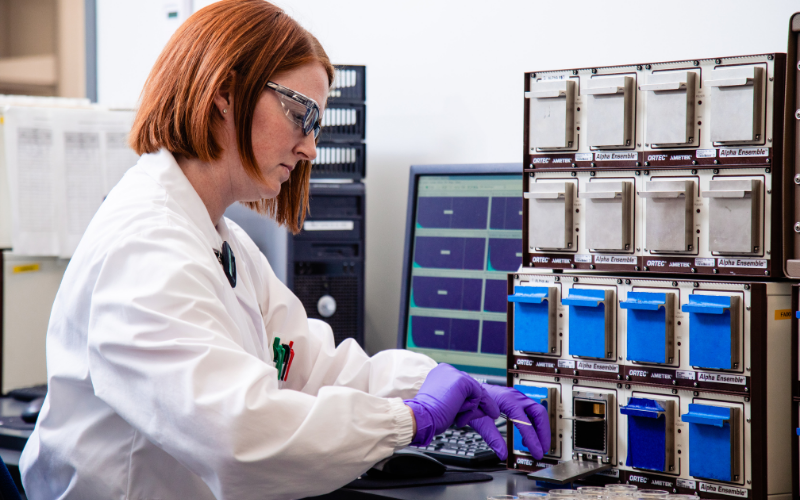
Radioactivity in mining is commonly associated with uranium but there are numerous other sources of it that can be found in the mining industry. While radioactivity is a natural phenomenon that needs to be managed, there are also cases where it can be used as a tool in driving exploration forward. It’s important then to understand what radioactivity is, how it’s encountered and the risks and benefits associated with it.
Sources of Radioactivity in Mining and Exploration
One type of radioactive source encountered in both mineral exploration and mining operations is classified as naturally occurring radioactive materials (NORMs). This contrasts with other types of radioactive sources that are concentrated or enriched by human activity, which are classified as technologically enhanced NORMs (TENORMs).
NORMs sources occur almost everywhere in the world as part of background radiation, mostly in sufficiently low enough concentrations that there isn’t a significant risk to life. But the natural processes that form ore bodies can increase the concentration of NORMs in a particular area. This can be a primary target for mining, for example uranium or a byproduct of another commodity such as rare earth minerals and can include an undesirable element in waste streams or tailings.
Radioactivity can be an important tool in unravelling the complex geological processes that lead to ore formation—information that can be used to find new deposits.
It has also long been used in geochemical assays for techniques like prompt gamma and neutron activation analysis, commonly known by its acronym PGNAA. NORMs minerals can be targeted by technologies such as sensor-based sorting through their characteristic gamma radiation signatures.
Both the risks to human and ecological health, and the utility associated with NORMs and TENORMs, make it critically important to understand radiation throughout all stages of the mining life cycle.
Overview of Radioactivity
Radioactivity is a natural phenomenon that occurs when unstable atomic nuclei spontaneously release energy (radiation) to achieve a lower energy and more stable state. This process is known as radioactive decay and these spontaneous emissions can be in the form of particles or energy.
They occur in certain pathways: alpha decay (emission of an alpha particle which consists of two protons and two neutrons), beta decay (emission of a beta particle which consists of an electron or positron), neutron radiation where a short-lived, free neutron particle is released and finally electromagnetic wave (energy only) decay like gamma or X-rays.
Alpha radiation has low penetration power and can be stopped by human skin but can be dangerous if inhaled or ingested. An example of this is radon.
Beta radiation has greater penetration power but can be stopped by certain materials such as aluminum.
Neutron decay occurs in nuclear reactions such as fission.
Finally, gamma (or X-ray) radiation has the highest penetrating power and can even pass through lead and concrete. It’s these forms of ionizing radiation that pose the greatest risk to biological entities.
Understanding Isotopes and Half Lives
While not all elements found in nature are radioactive, radioactive versions of all elements can exist. Individual elements are defined by the number of subatomic protons in their nucleus and grouped in the periodic table in this order (called the atomic number). The atomic nucleus of an element consists of a number of protons and neutrons and is key in determining the difference between elements and their properties.
Carbon, for example, has six protons (and atomic number of 6) and nitrogen has seven protons (and atomic number of 7). They are next to each other on the periodic table. The difference of only one proton per nucleus controls the very different behaviour of these two elements—carbon being a solid and nitrogen a gas at ambient conditions, for example.
The number of neutrons, the second component of an atomic nucleus, can vary significantly but doesn’t affect the fundamental chemical properties of the element.
Carbon (C), for example, has three naturally occurring versions of itself, with six, seven and eight neutrons respectively but all with the six protons.
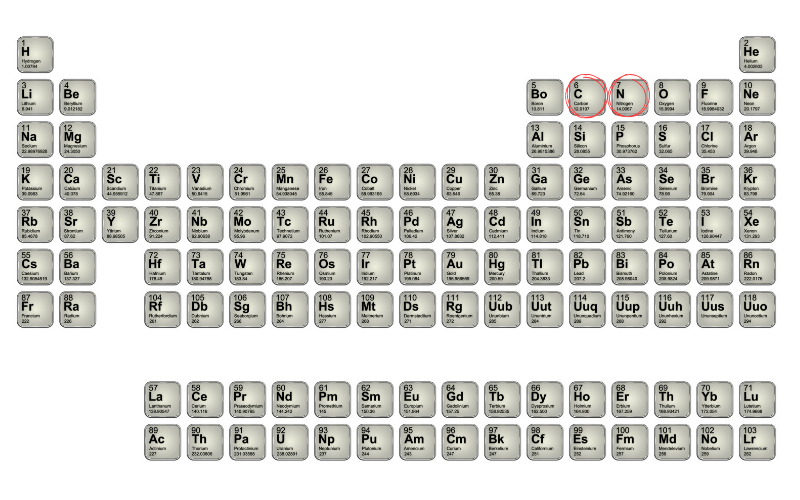
The term isotope is used to distinguish these different versions of the same element. The isotope number is determined by the sum of the protons and neutrons that comprise the atomic nucleus.
Looking at carbon again, it exists in nature in the form of isotopes Carbon-12, Carbon-13 and Carbon-14 (written as 12C, 13C and 14C) all of which behave identically in chemical reactions, but only 14C is radioactive.
Uranium (U) has three naturally occurring isotopes: 234U, 235U and 238U, all of which are radioactive. Thorium (Th) has only two significant naturally occurring (and radioactive) isotopes: 230Th and 232Th, of which 232Th comprises 99.98 per cent of natural thorium.
Radiation Risk is also Determined by Rate of Decay
It is these radioactive isotopes that undergo radioactive decay. Risk is determined by the type and strength of the decay, as well as the rate of decay. The process of radioactive decay is inherently unpredictable at the individual level of an atom. In other words, it’s not possible to predict which atom will decay and when. But given a large number of atoms, the process of radioactive decay becomes statistically predictable.
The predictability of radioactive decay over time is measured by an isotope’s half-life—the time required for one half of the radioactive element to decay. The half-life of radioactive isotopes ranges widely from fractions of a millisecond to billions of years. Isotopes with short half-lives emit more radiation over the same time period compared to isotopes with longer half-lives.
For example, radon gas has a short half-life (days) but can deliver a high radiation dose if inhaled in a poorly ventilated area. In contrast, uranium decays slowly but because it has a long half-life (billions of years), it emits less radiation but over a longer period of time.
Radioactivity in Daily Life
Exposure to radioactivity is an inescapable part of our daily lives. Medical and dental X-rays are well-known sources of lower levels of radiation. Air travel can be a more significant source of radiation exposure because the atmosphere provides less shielding from cosmic rays.
The low risk associated with most NORMs is a result of both their low abundance (or concentration) and/or long half-life.
Potassium-40 is the radioactive isotope most encountered by the public, but it comprises only 0.0117 per cent (low abundance) of all potassium and has a 1.25-billion-year half-life. Potassium-rich products and foods, such as bananas, all contain the radioactive isotope Potassium-40 (40K). The low abundance and long half-life of Potassium-40 is why the dose risk for eating a banana is so extremely low.
The informal expression “a banana-equivalent dose” recognizes these lower levels of exposure with radiation in our everyday lives.
Other radioactive isotopes encountered in daily life are not so benign.
Radon (Rn), of which all known isotopes are radioactive, is produced by the radioactive decay of uranium and thorium. As a heavier-than-air gas, radon accumulates in lower areas due to gravity, such as basements and crawlspaces, particularly in areas built over granitic rocks (granite is a rock type known for concentrating uranium and thorium during its formation).
The health risks associated with inhaling radon gas are significant. According to Health Canada, radon exposure is the leading cause of lung cancer in non-smokers. When inhaled, radon gas continues to decay by emitting a high-energy alpha particle that is absorbed by lung tissue and damages lung cells. Over time, the cumulative effects of radon exposure can lead to cancer.
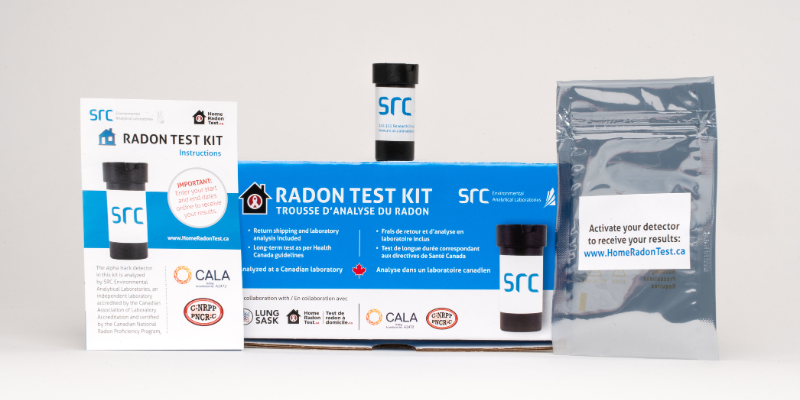
Radon is invisible, tasteless and odourless but can be detected through testing. SRC offers radon test kits individually through homeradontest.ca and as bulk orders to support people, communities and businesses with testing. The analysis is done in Saskatchewan at SRC Environmental Analytical Laboratories, an independent laboratory accredited to ISO/IEC 17025 standards by the Canadian Association for Laboratory Accreditation and the Canadian National Radon Proficiency Program.
Radioactivity in Mining
Ore deposits are formed exclusively in locations where geological processes have concentrated minerals to levels that are economically viable for extraction. These same processes work to concentrate both radioactive and non-radioactive elements.
The most straightforward example of concentrated radioactive elements is in uranium mining where highly concentrated radioactivity leads to a desirable economic outcome in the exploration and extraction process, but also presents human health risks.
The radioactive decay of uranium, like radon, occurs by alpha particle emission and poses the same inhalation risks from fine dust. When uranium (parent) decays, it creates several new isotopes (daughters) that emit radiation by all forms, and this decay process eventually produces stable lead isotopes (e.g., Lead-206, Lead-207). Where other uranium daughter isotopes are intense gamma radiation emitters—most notably Lead-214 and Bismuth-214—and are the most hazardous.
The high-energy gamma rays produced by the decay of these two isotopes can penetrate several centimetres of rock and soft tissue. Alpha particles, in comparison, have a sub-millimetre penetration depth.
Although they present health risks, measuring the characteristic energy of the gamma rays can also be beneficial in mineral exploration. It can help locate the occurrence of concentrated uranium deposits, in process monitoring, and to ensure worker safety at mines and mills.
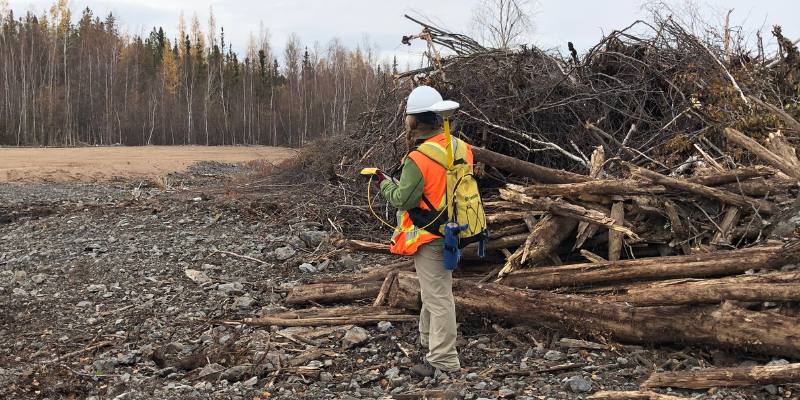
In addition, the strong correlation between gamma emitting daughter isotopes and parent uranium can be exploited in sensor-based sorting applications to preconcentrate uranium ore from low-grade deposits. In this application, the gamma emitting isotopes are detected as a proxy for uranium.
Radioactive elements can also be useful in the mineral exploration and mining of other deposits. For example, rare earth elements (REE) are often found in minerals that also contain uranium and thorium. Monazite, an REE bearing mineral, can contain 10-15 per cent thorium and a small percentage of uranium.
The gamma radiation from REE deposits is sometimes underused as a tool in the early stages of mineral exploration for REEs. The gamma ray energy signature from thorium decay products is different from uranium and can be used to radiologically fingerprint the two large radioactive sources. This has applications in radiometric ore sorting and environmental and tailings monitoring.
It important to note that not all REE mineral deposits contain radioactive elements.
Potassium-40 (40K), as mentioned previously, is a low-abundance, gamma emitting isotope. The gamma signature of potassium has been extensively used in the oil and gas industry for subsurface characterization. The most common application is using natural gamma downhole logging to distinguish shales—which have high potassium content and therefore higher gamma—from sandstones and carbonates, which have lower gamma signatures.
The two primary economic target minerals in potash mining—sylvite and carnallite—are potassic minerals (KCl and KMgCl3·6H2O) and contain measurable quantities of radioactive potassium.
While potash mines have background radiation levels that are higher compared to other outlying areas, the dose levels experienced by mine workers are well below the regulatory limits for occupational exposure. Potash miners are exposed to less radiation than uranium miners. Compared to other naturally occurring radionuclides, potassium is less radiotoxic and does not build up in humans.
Harnessing Radioactivity to Improve Exploration
Radioactivity, specifically the application of radioactive decay in radiometric dating of minerals is becoming an important tool in mineral exploration. Radiometric dating is a technique used to determine the age of materials, such as rocks and fossils, by measuring the decay of radioactive isotopes within them. Radiometric dating of zircon (ZrSiO4) has been demonstrated to be useful for predicting copper mineralization in large volume, volcanically-driven hydrothermal (porphyry) deposits.
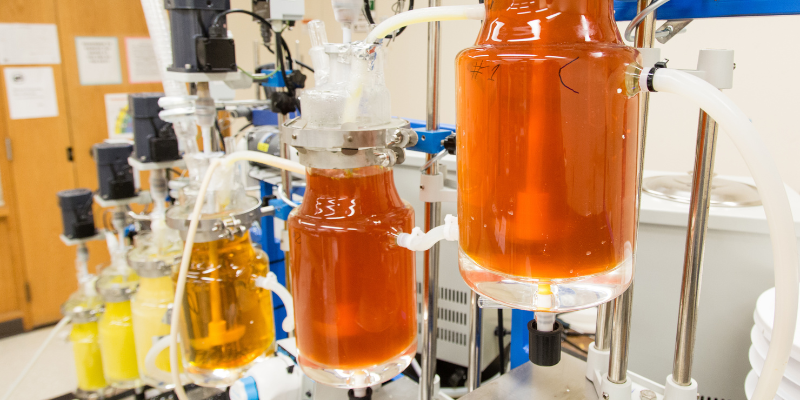
For example, radiometric dating on zircon crystals recovered during mineral exploration in South America can reveal whether they are from the older, barren deposits or younger, highly prospective ones. If the younger zircon population is absent in an area, it may not even be prospective at all. The zircon radiometric dates can also help clarify concentrations of copper.
Expertise Across the Mining Cycle
With decades of expertise and several laboratories, SRC provides analysis and guidance surrounding all aspects of radioactivity across the mining cycle.
Since 1973, SRC Geoanalytical Laboratories—which is licensed by the Canadian Nuclear Safety Commission (CNSC) to safely receive, process and archive radioactive samples— has offered a full suite of analytical services for uranium exploration and mining.
The process of shipping, receiving, handling and analyzing radioactive materials is done in a manner by the lab that emphasizes employee safety, while providing high-quality results in a timely manner.
SRC’s Minerals Processing team are experts in all aspects of uranium, thorium and REE processing. They have laboratories and facilities with dedicated personnel, procedures and equipment to handle minerals processing and hydrometallurgical technologies.
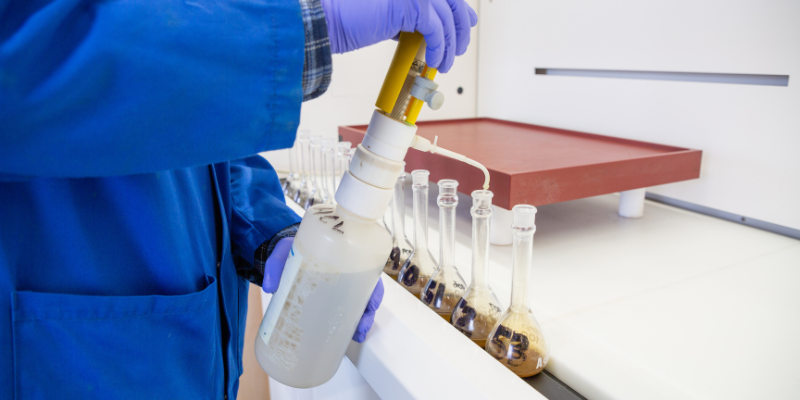
For ores that contain radioactive elements, SRC’s Sorting and Separation team offers preconcentration and sensor-based sorting testwork that can both handle radioactive ores, as well as sensors that use radioactivity as a parameter for mineral separation.
SRC Environmental Analytical Laboratories, also CNSC-licensed, offers expert NORM and radiological testing on many different types of sample matrices, including water, tailings, biological samples and other substances. The laboratory also conducts environmental radiological surveys, radon testing and safely operated a SLOWPOKE-2 (a nuclear research reactor) for more than 38 years prior to its decommissioning.
Our expertise extends into the field, as well. SRC is managing the remediation of 37 abandoned uranium mine and mill sites, collectively known as Project CLEANS, in northern Saskatchewan. The project includes two large sites—the Gunnar Mine and Mill Site and the Lorado Mill Site—as well as 35 Satellite Sites. The team has unique expertise in remote sites and sites where radionuclides are present. As a leader in radionuclide and radiation assessments, SRC has developed full cycle expertise to conduct gamma surveying, calibrate instrumentation and develop numeric-based risk modelling. This includes education and community engagement around the risks of radioactivity.
Radioactivity is part of our everyday lives and while the risks need to be understood and mitigated, it can be used as a valuable tool in exploration and minerals processing. Working with an expert in radioactivity—such as SRC—can help the industry to understand and manage the risks, while also leverage the benefits of radioactivity.
